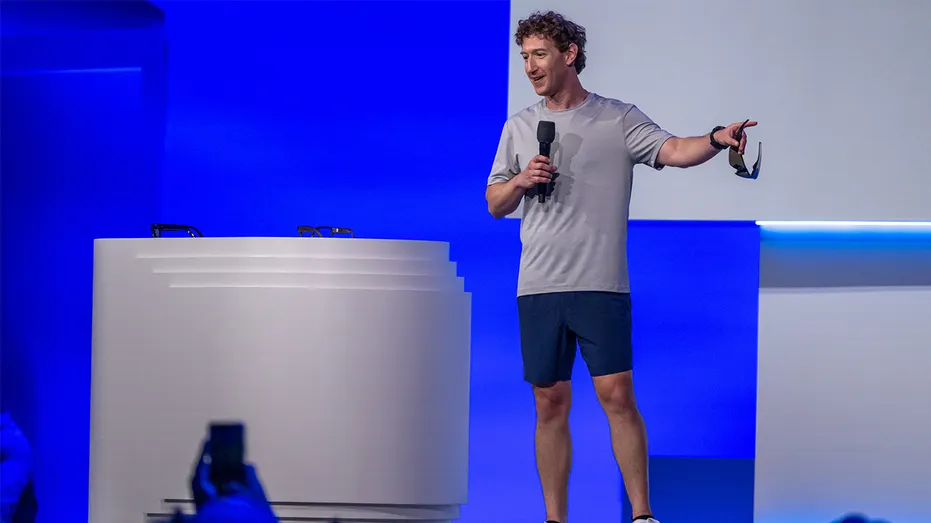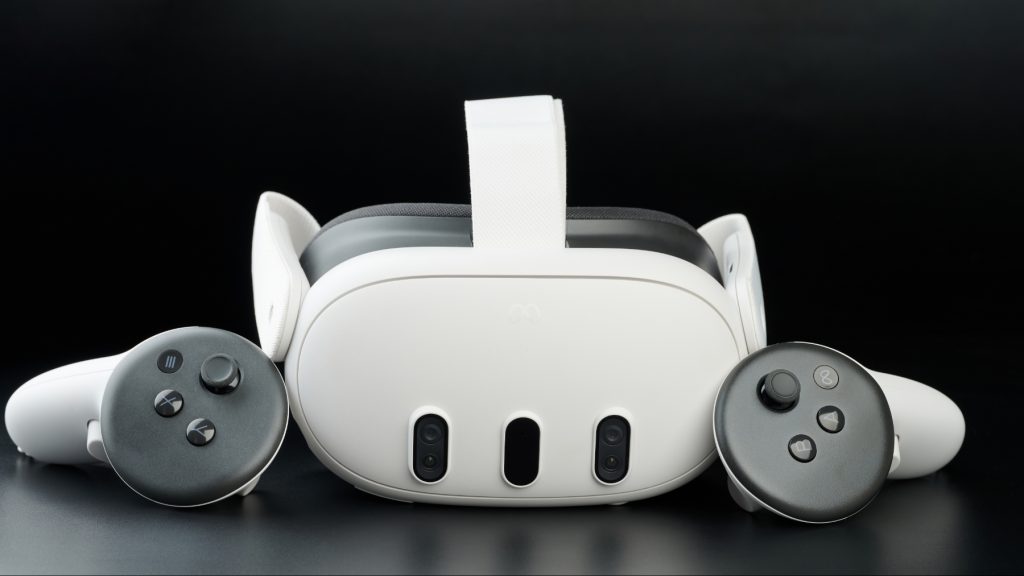Meta Description: Mark Zuckerberg’s live demo of Meta’s new AI glasses went wrong at the Connect 2025 event. Live glitches exposed challenges of wearable AI and public tech demos.
Meta’s AI Glasses Take the Spotlight
Mark Zuckerberg’s long-anticipated debut of Meta’s AI-powered Ray-Ban Display glasses did not go as planned during the Connect 2025 keynote. The event, held at Meta’s Silicon Valley headquarters, was meant to showcase a new era of wearable AI technology, but live demo glitches stole the show.
Priced at $799, the Meta Ray-Ban Display glasses are designed as “agentic AI” devices. They include a digital assistant that can act on behalf of the user, sending texts, giving directions, or even guiding someone through tasks like cooking. The glasses were marketed as a breakthrough in personal AI technology, bridging the gap between futuristic innovation and everyday usability.
Live Demo Glitches Take Center Stage
The first demo went off track when Zuckerberg showed a live view through the glasses and tried responding to texts using small wrist motions. Cooking creator Jack Mancuso joined onstage to test the LiveAI feature, which is supposed to walk users through recipes step by step.
However, the AI repeatedly skipped steps and refused to answer a simple question, “What do I do first?” According to tech expert Lance Ulanoff from Tech Radar, “The AI was clearly confused and jumping around.” He explained that live demos often fail because thousands of attendees are on Wi-Fi simultaneously, making connectivity unpredictable.
Despite the mishaps, Zuckerberg maintained his composure and attempted to continue the demonstration, emphasizing the potential of wearable AI assistants.
Second Demo Stumble with Neural Band
The second demo involved Meta CTO Andrew Bosworth, who tried to initiate a WhatsApp video call using the Neural Band. While Zuckerberg successfully sent and received a text from Bosworth, the video call would not connect.
Zuckerberg fumbled with the interface onstage before eventually giving up. Bosworth joked about the “brutal Wi-Fi”, eliciting laughter from the audience. Zuckerberg later admitted, “You practice these things like a hundred times, and then you never know what’s gonna happen.”
This incident highlights the risks of live technology demonstrations, especially with devices that rely heavily on real-time AI processing and internet connectivity.
Challenges of Live AI Demonstrations

Live demonstrations of AI technology are notoriously risky. Tech analysts note that companies like Apple no longer rely on live demos for complex features. Instead, they use pre-recorded videos to ensure smooth presentations.
| Company | Demo Style | Reason |
|---|---|---|
| Meta | Live AI demos | Real-time interaction but prone to glitches |
| Apple | Pre-recorded demos | Total control, reduces risk of failure |
| Microsoft | Mixed approach | Live demos for simple features, videos for complex AI |
The table shows how different tech companies approach demos, balancing risk and user engagement. Meta’s choice to do live demos reflects a desire for authenticity, but it also exposes potential flaws in front of a global audience.
Audience Reaction and Expert Opinions
Despite the technical glitches, experts and attendees praised Zuckerberg’s calm demeanor and willingness to take risks. Ulanoff commented, “Mark has enthusiasm, and so he was willing to take the risk, but unfortunately, in a couple of instances, it didn’t go his way. I give him credit for maintaining his calm and making a joke about it all.”
The audience also reacted with a mix of laughter and curiosity. The incident illustrated a key point about cutting-edge AI technology: even with rigorous preparation, live use cases can produce unpredictable results.
The Promise Behind Meta’s AI Glasses
Although the demos failed, Zuckerberg highlighted the broader vision of Meta’s AI glasses. The devices are designed to anticipate user needs, assist with daily tasks, and provide a seamless AI experience.
Some of the key features include:
- Text and communication management: Send messages or respond to texts using wrist motions.
- LiveAI assistance: Step-by-step guides for activities like cooking or planning events.
- Neural Band integration: Enables AI interaction for messaging and calls without manual typing.
Zuckerberg framed the glasses as part of a future where wearable AI seamlessly integrates into daily life, making tasks easier and more intuitive for users.
Lessons Learned from the Meta Connect Event
The Meta Connect 2025 event shows that even tech giants struggle with live AI demos. Factors such as Wi-Fi congestion, real-time processing limits, and user interaction unpredictability can affect the outcome.
Analysts suggest that companies must balance live demonstration excitement with reliability, especially for high-profile product launches. While Meta’s glasses show great potential, they may need further refinement before widespread adoption.
Comparing AI Wearables: Meta vs Competitors

| Feature | Meta Ray-Ban Display | Competitor Devices |
|---|---|---|
| Price | $799 | $600–$1200 |
| Live AI Assistance | Yes | Limited / pre-programmed |
| Neural Band | Yes | No |
| Demo Reliability | Low (live demo prone to glitches) | High (mostly video demos) |
| Everyday Use | Intended for seamless daily tasks | Limited to fitness or notifications |
This comparison highlights how Meta is pushing boundaries with real-time AI, while competitors prioritize stability and controlled experiences.
Conclusion
Mark Zuckerberg’s Meta AI glasses demo at Connect 2025 was ambitious but flawed. Live glitches reminded everyone that AI technology, especially in wearables, is still evolving. Despite the hiccups, the event demonstrated Meta’s commitment to innovation and wearable AI experiences.
The glasses aim to redefine personal AI assistants, making them more intuitive, anticipatory, and integrated into daily life. While the road to perfection may be long, Meta’s AI glasses offer a glimpse into a future where technology works alongside users rather than requiring them to adapt.


